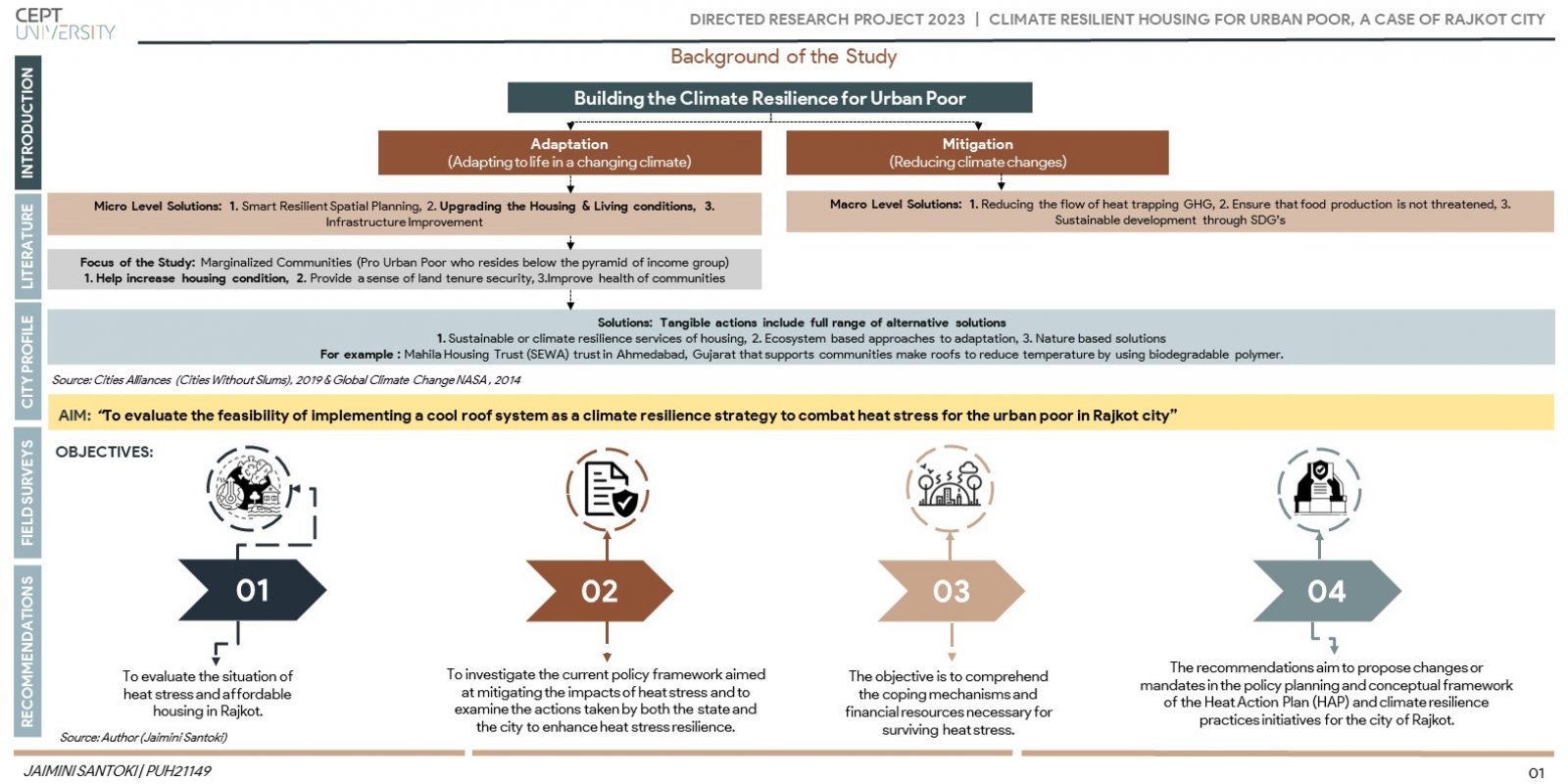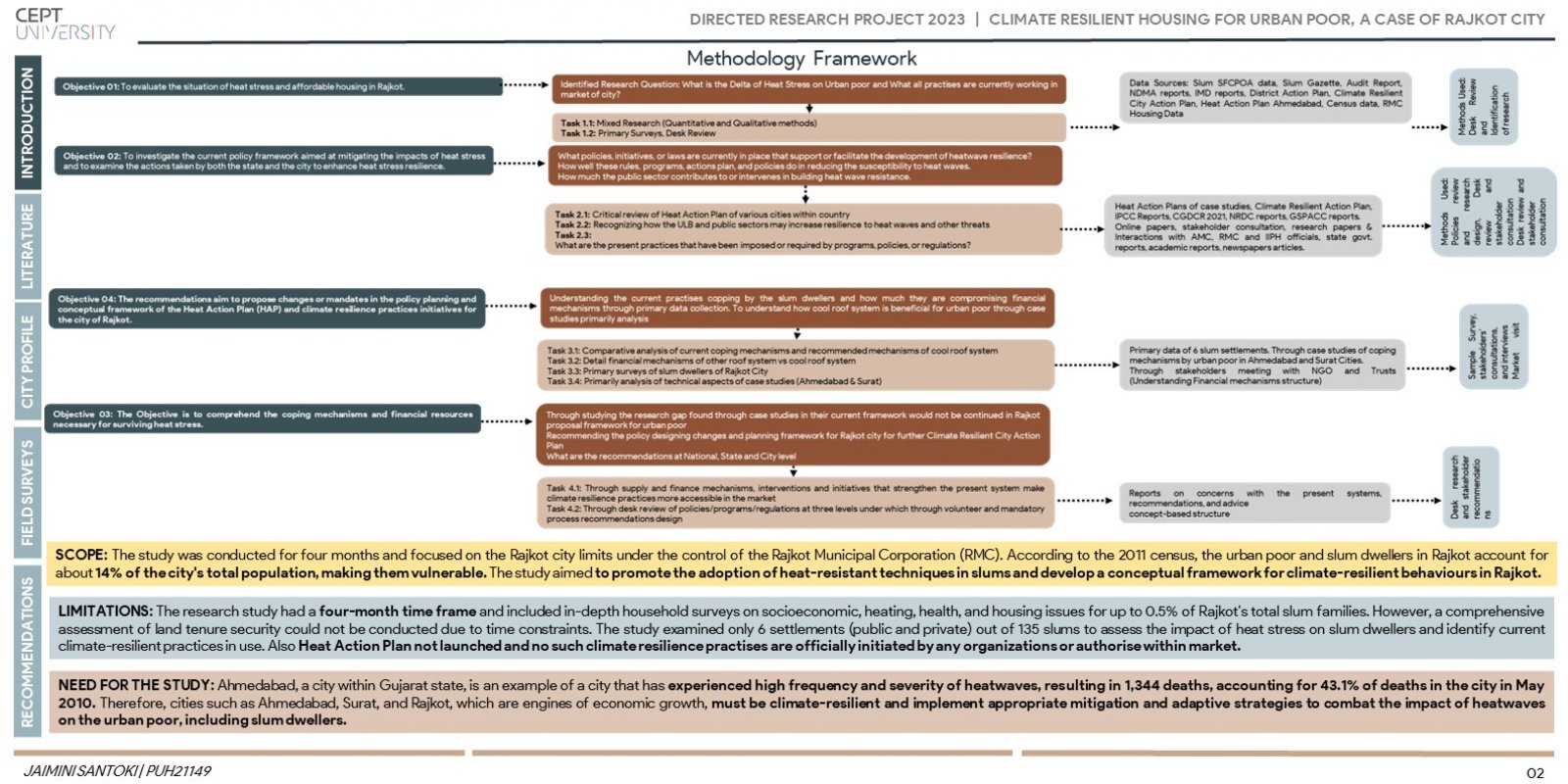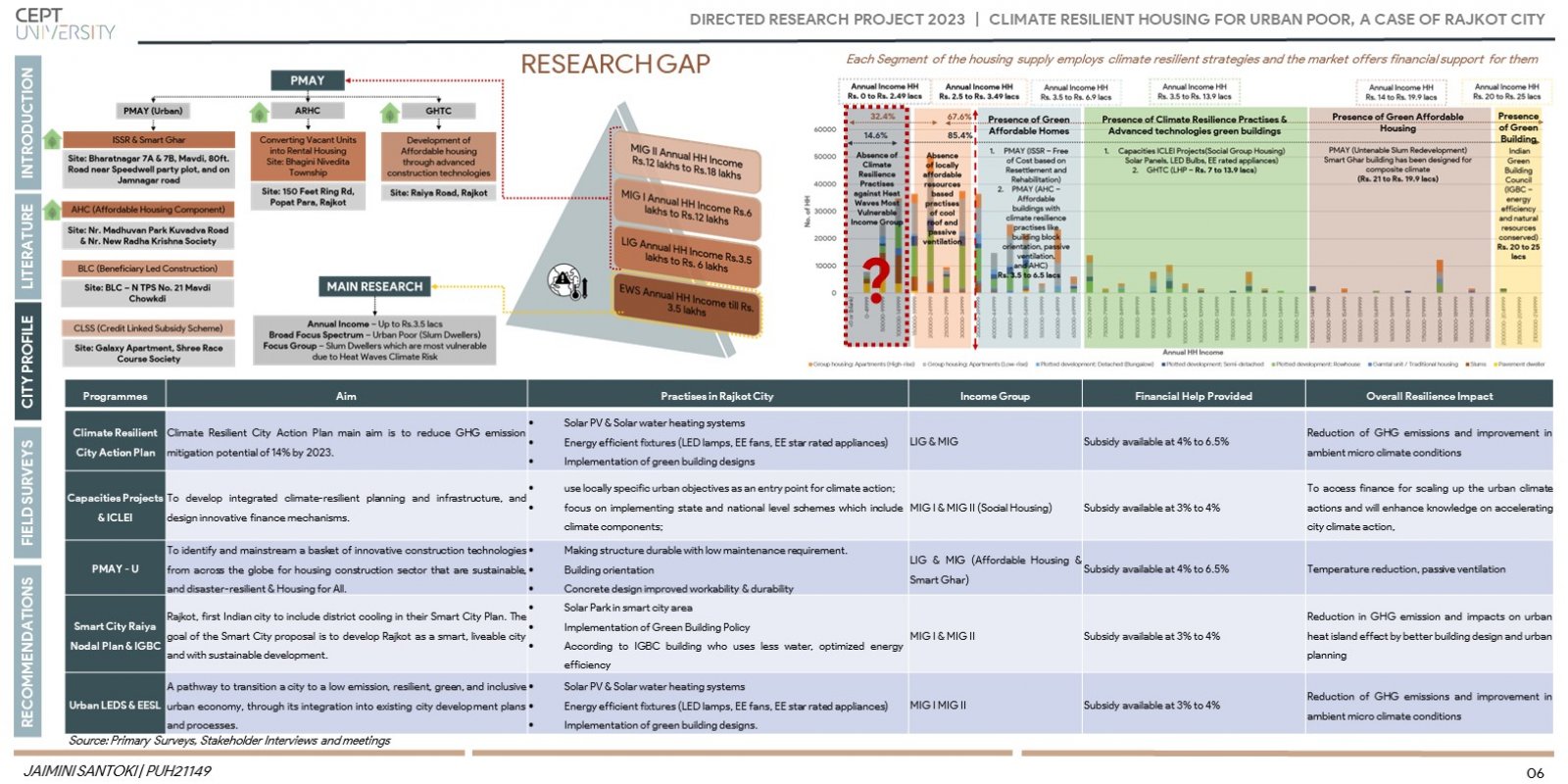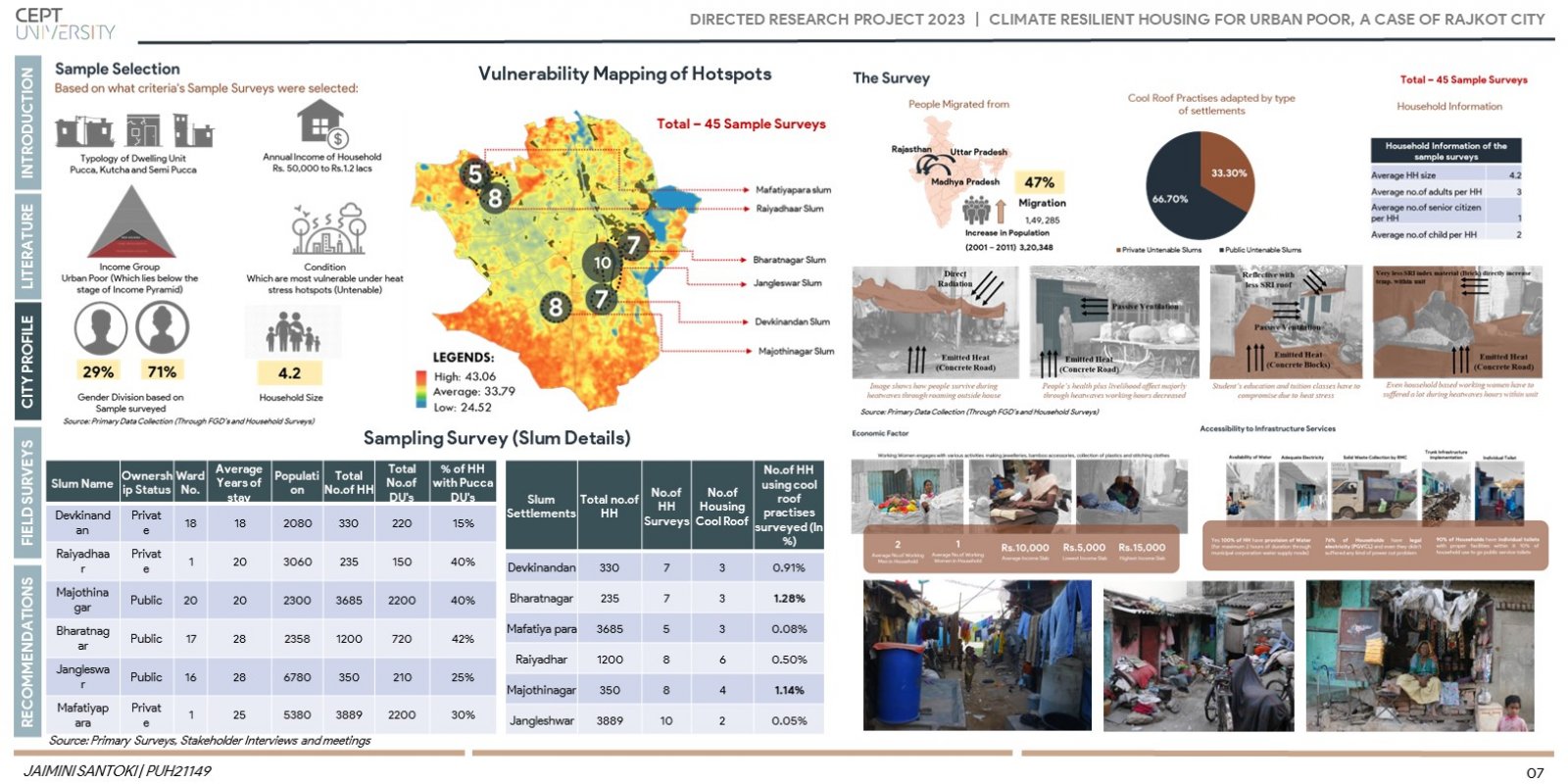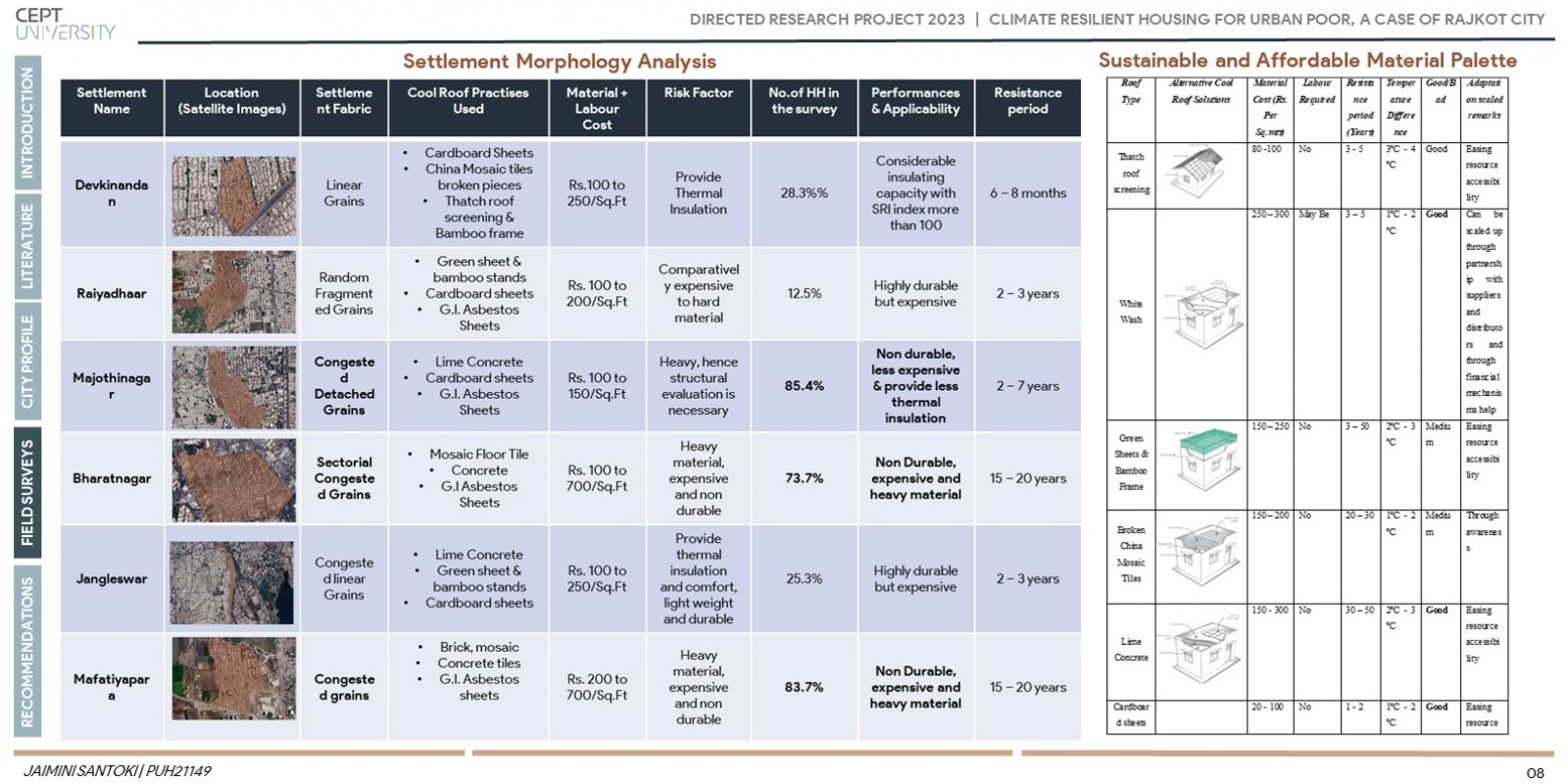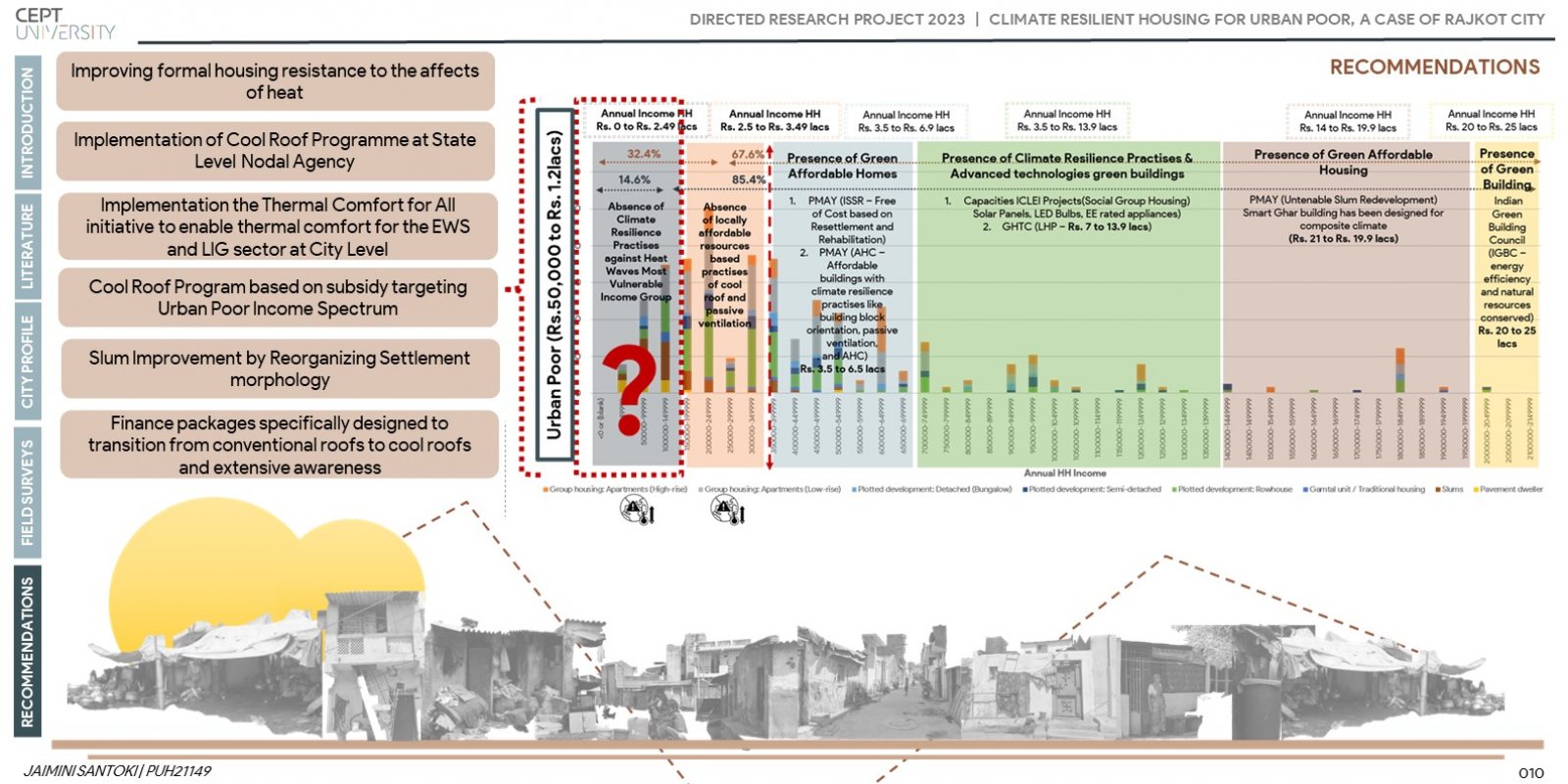Your browser is out-of-date!
For a richer surfing experience on our website, please update your browser. Update my browser now!
For a richer surfing experience on our website, please update your browser. Update my browser now!
India's rapid urbanization and transition pose significant challenges, particularly in providing affordable housing in growing cities. Self-built or Do It Yourself segments are expected to meet much of this demand, leading to issues such as overcrowding, congestion, insufficient infrastructure, and environmental degradation. To mainstream the aspects of green, affordable, and resilient housing, a transformative shift is required from the present top-down approach to a bottom-up approach. This shift would involve developing systems and processes that prioritize the needs of the people, especially those in the affordable housing segment. This research paper focuses on the resilience of urban poor housing in slum settlements in the context of global warming challenges, particularly heat stress hotspots. The study examines the conceptual framework for climate resilience practices in urban areas, with a particular focus on the involvement of local administration, organizations, and financial mechanisms at national, state, and local levels. The research highlights the challenges faced by slum dwellers in coping with the effects of urban heat islands, which can lead to serious health issues and other economic and social impacts. Worldwide, the frequency of heat wave episodes is increasing, and India is no exception. In Indian cities, heat waves are the natural danger that results in the greatest number of fatalities. Given that cities contain a significant population of urban poor who are prone to heat stress, it is imperative that cities adapt to the growing heat stress. The vulnerable population in Rajkot city is experiencing increased heat stress, which has an impact on their health, way of life, and productivity. The Rajkot severe heat response is implemented, coordinated, and evaluated using a framework provided by the HSAP, which also detects hotspots of heat at the ward level and assesses the vulnerability of the urban poor. The research methodology and analyses used to develop Rajkot's Ward-Level Heat Action Plan are discussed in this study. The awareness regarding climate resilience practices and financial mechanisms as part of this effort helps Rajkot prioritize targeted action by recognizing adaptive weaknesses and identifying methods for creating new adaption mechanisms.
